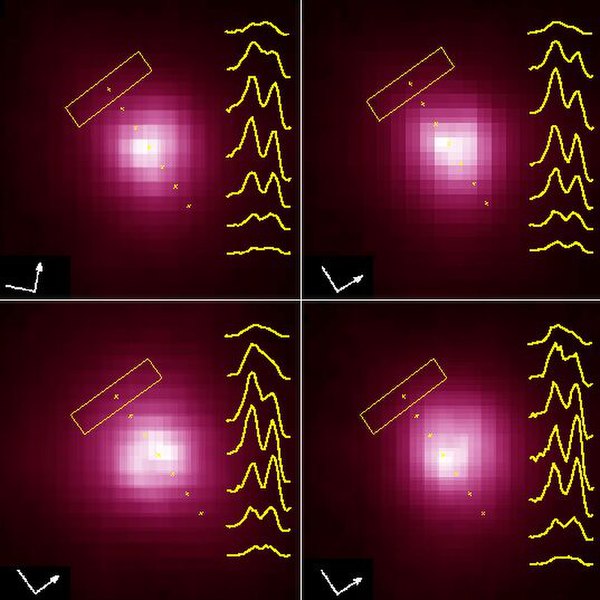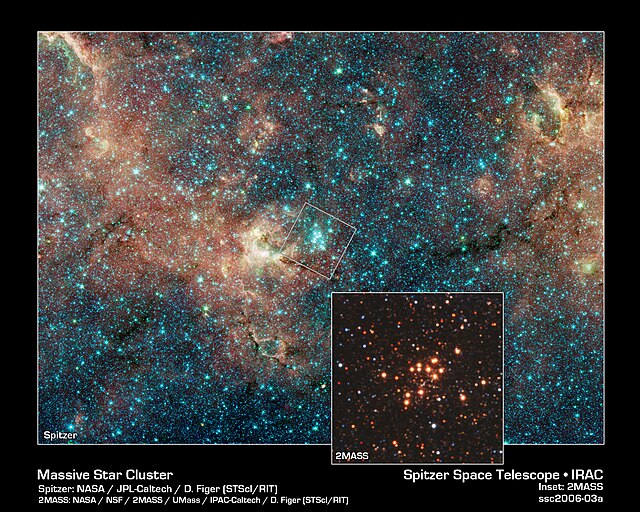Betelgeuse is a red supergiant star in the constellation of Orion. It is usually the tenth-brightest star in the night sky and, after Rigel, the second-brightest in its constellation. It is a distinctly reddish, semiregular variable star whose apparent magnitude, varying between +0.0 and +1.6, has the widest range displayed by any first-magnitude star. Betelgeuse is the brightest star in the night sky at near-infrared wavelengths. Its Bayer designation is α Orionis, Latinised to Alpha Orionis and abbreviated Alpha Ori or α Ori.
1998/9 UV HST images of Betelgeuse showing asymmetrical pulsations with corresponding spectral line profiles
AAVSO V-band magnitude of Betelgeuse, between September 2016 and August 2023
Comparison of SPHERE images of Betelgeuse taken in January 2019 and December 2019, showing the changes in brightness and shape
Image showing Betelgeuse (top left) and the dense nebulae of the Orion molecular cloud complex (Rogelio Bernal Andreo)
Red supergiants (RSGs) are stars with a supergiant luminosity class and a stellar classification K or M. They are the largest stars in the universe in terms of volume, although they are not the most massive or luminous. Betelgeuse and Antares A are the brightest and best known red supergiants (RSGs), indeed the only first magnitude red supergiant stars.
Betelgeuse pulsating and showing spectral line profile changes (HST UV images)
A red supergiant ends its life as a type II supernova (bottom left) in a spiral arm of M74
RSGC1, the first of several massive clusters found to contain multiple red supergiants.
The Orion region showing the red supergiant Betelgeuse






